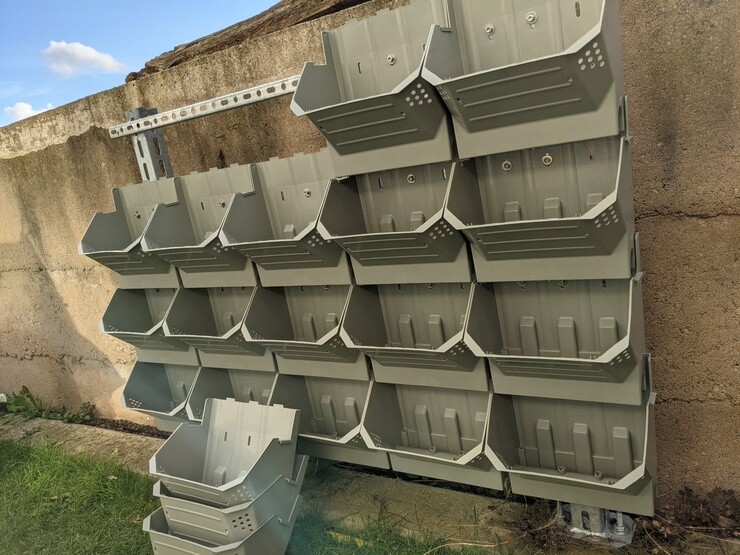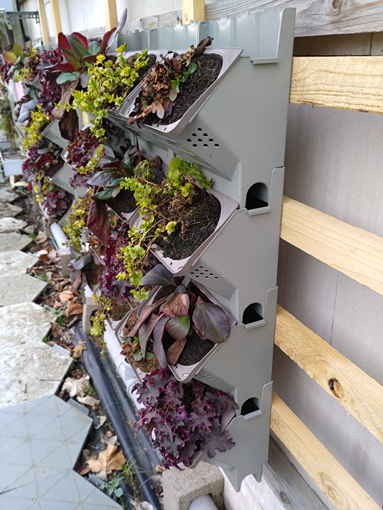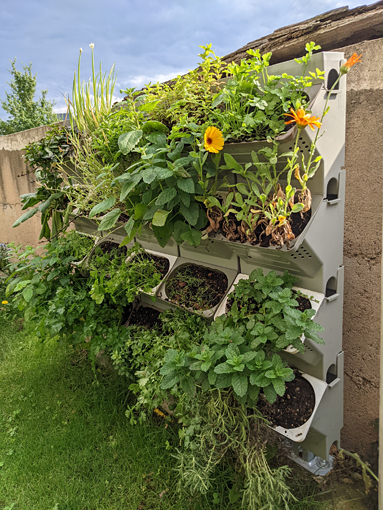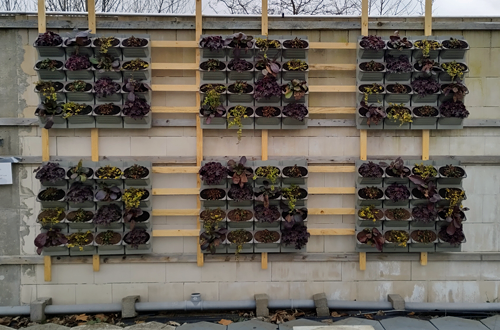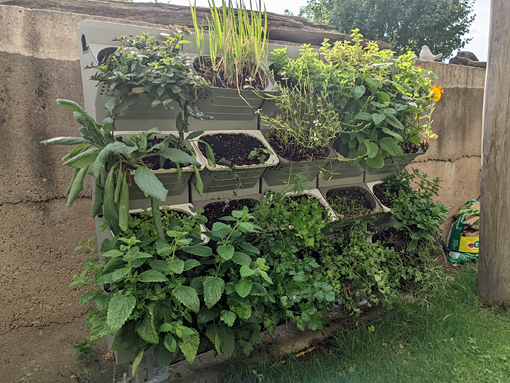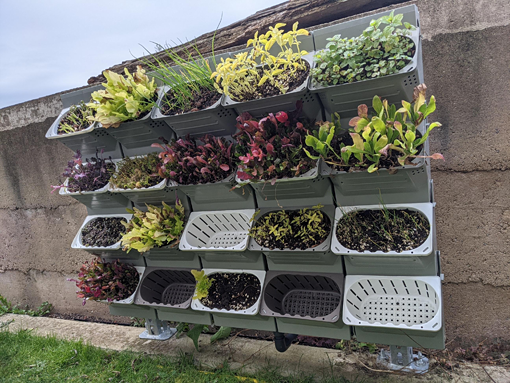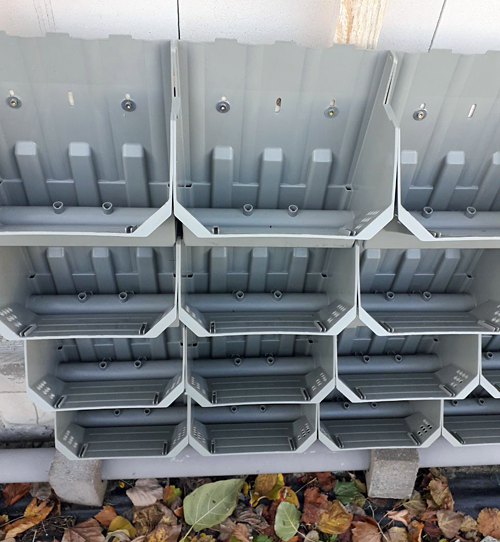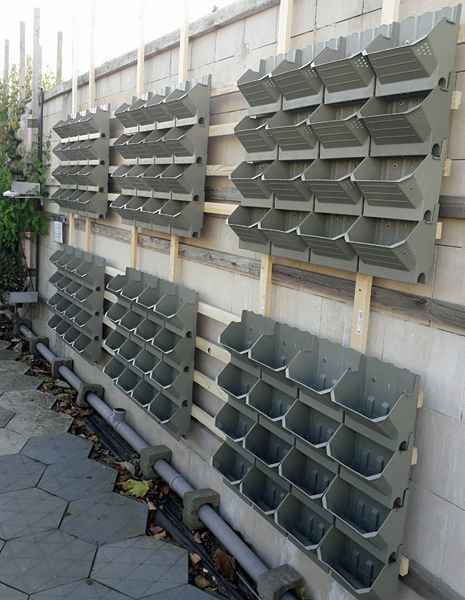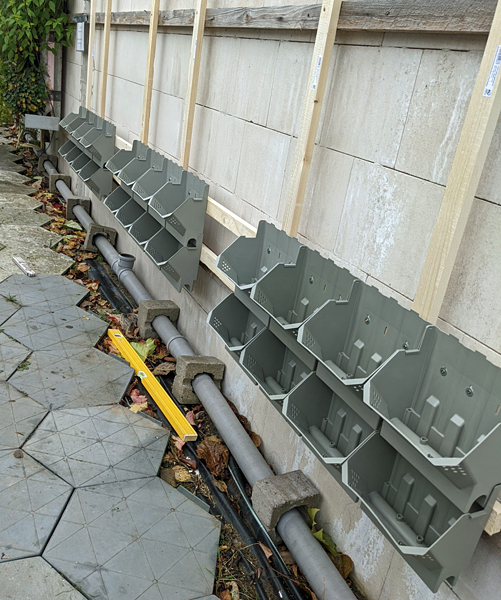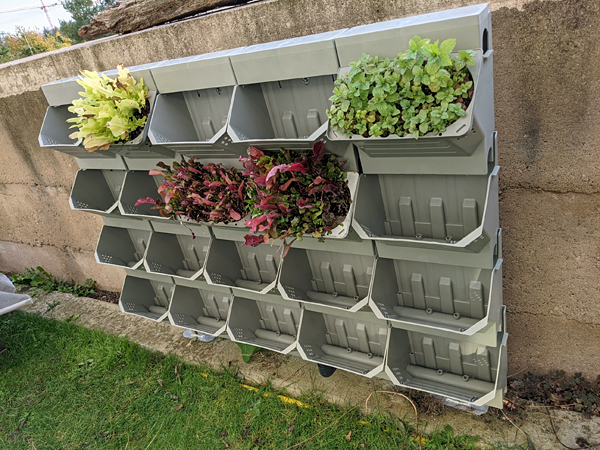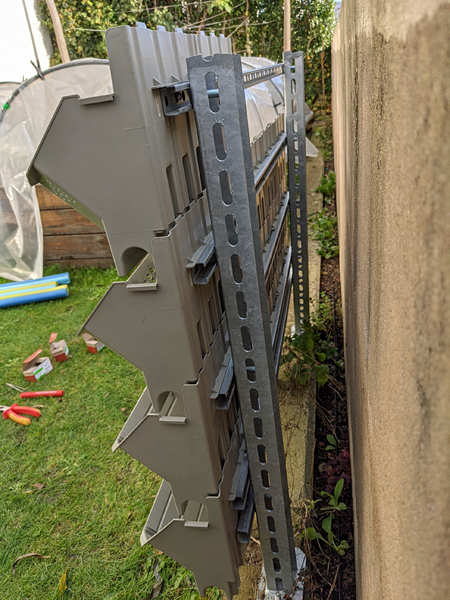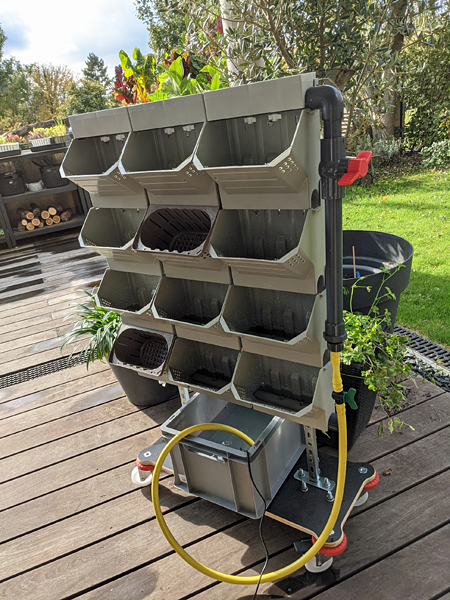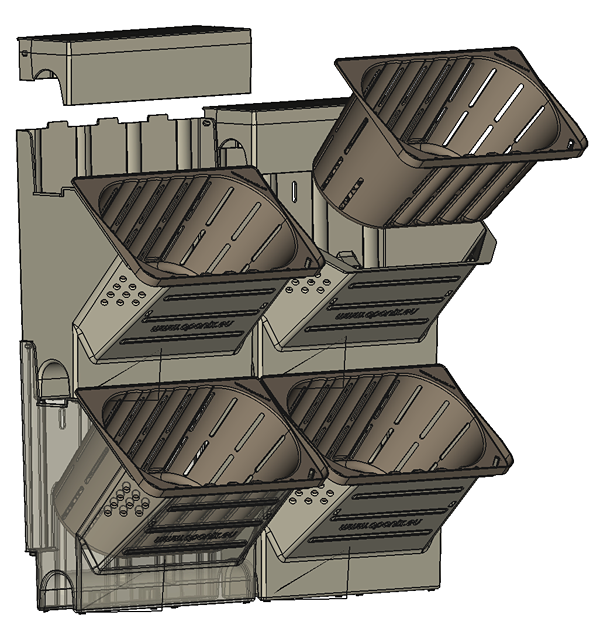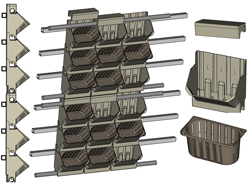|
| > Hier geht es zur Deutschen Version dieser Seite…
|
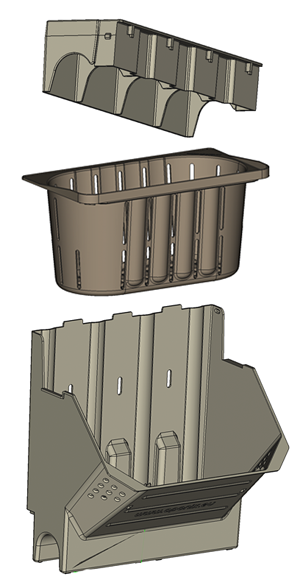

Background: Getting deeper into urban farming and smart cities, we got often asked why we do not offer also a wall system apart from the 3D hydroponic system – the vertical barrel. With the substrate based City XL barrel we already made a first step to become a solution provider for equipment to make your city a greener, more bio-productive, colorful and eco-friendly place to live.
Please request a quote including shipping from our component overview area.
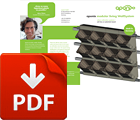
Areas of application:
- Indoor vertical gardens and decorative atmospheric back to back installations in public buildings and office space.
- Outdoor urban wall decoration and farm and plant setups used as insulation against heat and more urban bio-diversity.
Properties:
- Simple and robust with regard to installation and operations, cleaning and plant preparation and rotation.
- Material is flame protected (V0), uv-stabilized PP and since we are manufacturing in Germany it will all be compliant to the very strict EU REACH directive in terms of food safe use to also grow edible plants.
- The system only consists of 3 parts: a) the wall mounted module, b) the inserted pot for your plants and c) a cover for the top most row.
- It is installed onto horizontal mounting rail with flexible spacing between the modules and the wall. Here is a very simple example.
- Solid module corpus to be mounted in rows and columns tightening each other like roof tiles or shingles.
- Pot size: Each pot insert can hold 2 plants grown in standard 10.5cm pots next to each other (20cm by 10cm rectangular insert space). Young plants can be prepared and grown off-site on standard ebb-and-flow tables.
- Click and insert or replace any pot anytime.
- Every row can have a top irrigation line and/or a bottom draining line – flexible number of feed and draining lines depending on application. Lines can be standard 32mm PVC pipes or smaller diameters if you need to use fittings in between. No wicking fleece needed anywhere.
- Liquid flow hits triangular slits in 3 areas going through the system on every level.
- Selection for the medium of choice from hydroton pebbles and operation as hydroculture (Wall-NFT) to soil setups or special light weight alternatives.
- Geometry provides:
- Unobstructed path to ventilate heat off on its way up though each column and out of the system on strong sun radiation with less or starting vegetation.
- Air insulation inside between the outside surface and the pot insert to enable unobstructed circulation.
- Water reservoir (250ml) in every module without touching substrate from the inserted pot insert as liquid buffer.
- Redundant overflows into the lower level and into horizontal 32mm PVC draining pipe. Plus additional emergency overflows on unlikely blockages.
- Unseen stability and robustness.
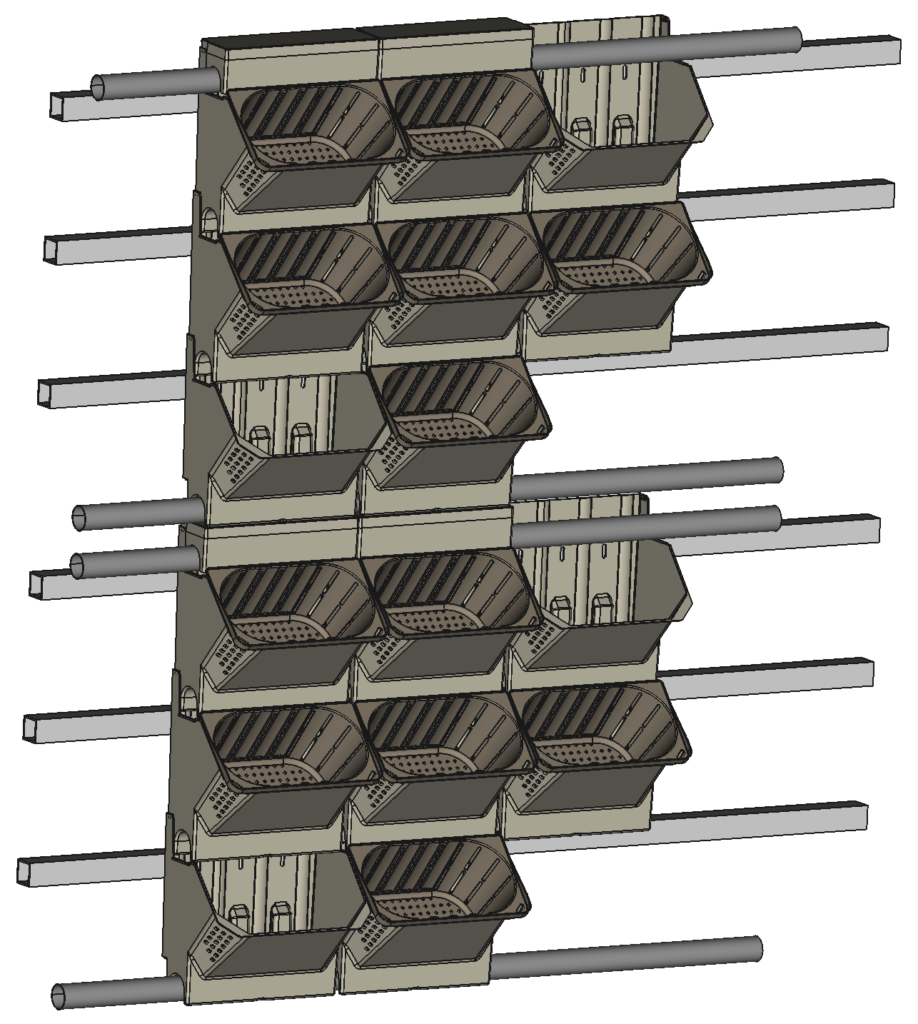
Installation images and liquid flow videos:
- https://www.facebook.com/aponix.eu/posts/1722234121307166
- https://www.facebook.com/aponix.eu/posts/1722236991306879
- https://www.youtube.com/watch?v=Ra9XAFZGa4E
- https://www.youtube.com/watch?v=UQLIKi0pgoE
Target user group:
Planning, first off planting installation and maintenance of a living wall requires some technical and horticultural experience. As manufacturer of the aponix components we usually deliver defined parts list or our standard bulk boxes with a fixed number of items usually to installation companies, horticulture consultants and versed hobby users and initiatives. We do not plan professional setups nor install or plant or maintain them. On request you can get discounted testing materials. All our elements are manufactured in Germany and are sent from Heidelberg/Heppenheim (DE).
Product-Partners use these elements:
- Wall Module
- PotInsert for Wall
- Lid for top row/irrigation cover
- Module Trellis (Bracket)
- Jute inserts for the Side and the Bottom of the PotInsert
Product Partner example:
